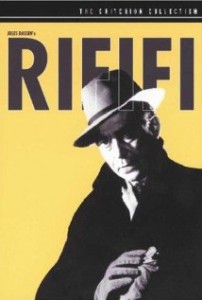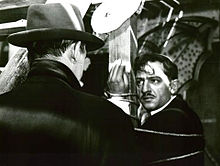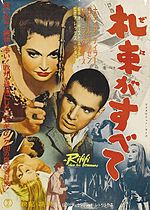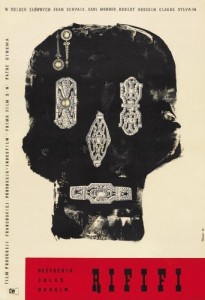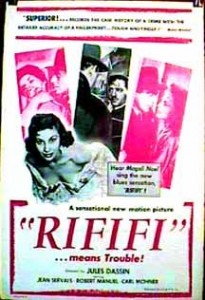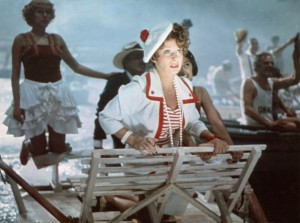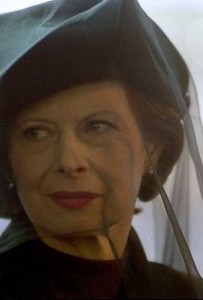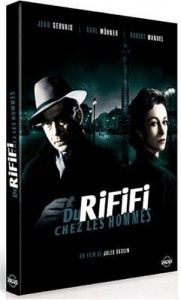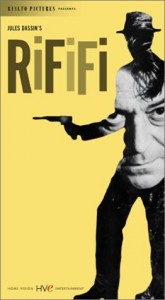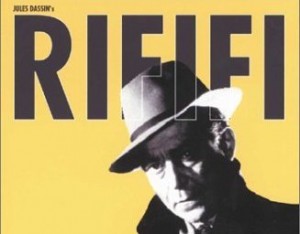Rififi ***** (1955, Jean Servais, Carl Möhner, Robert Manuel, Jules Dassin, Magali Noël) – Classic Movie Review 1352
Co-writer/director Jules Dassin’s deservedly renowned and celebrated 1955 gem heist thriller is a compulsively watchable bona fide French film noir classic, realistically staged on Paris locations in winter. It stars Jean Servais, Carl Möhner, Robert Manuel and Jules Dassin as four crooks who get together to commit the daring near-impossible theft, the burglary of Mappin & Webb’s exclusive jewelry shop in Paris.
The highlight and centre-piece of the film its famous ingeniously staged, ultra-tense half-hour robbery sequence, though the ensuing aftermath is some ways even better. In a spectacular comeback after being blacklisted, Dassin the award for Best Director at the 1955 Cannes Film Festival.
Shot without dialogue or music, with only natural sound, and taking up a quarter of the movie, the intricately shot heist sequence still delivers a knockout blow to audience sensibilities. The fictional crime is depicted in such detail that it has been mimicked by criminals in actual burglaries around the world. Talk about life imitating art!
In turn, art had imitated life as the heist scene was based on an 1899 burglary along the Cours St-Louis in Marseille. A gang broke into the first floor offices of a travel agency, cut a hole in the floor, used an umbrella to catch the debris and made off with the contents of the jeweller’s shop below.
Jean Servais stars as aging gangster Tony le Stéphanois, just out of jail after five years for jewel theft. Carl Möhner plays young Swedish gangster Jo le Suédois, for whom Tony took the rap in jail. In return, Jo invites a reluctant Tony in to mastermind the heist. Robert Manuel plays happy-go-lucky Italian gangster Mario Farrati, who comes up with the idea for the jewel heist, and Jules Dassin himself plays Italian safecracker César le Milanais. Crucially, Tony is godfather to his namesake Tonio (Dominique Maurin), Jo’s young son Tonio.
In the story based on Auguste le Breton’s novel, these four Montmartre burglars, who hit Mappin & Webb’s exclusive jeweller’s store in the Rue de la Paix in Paris, find that they come up with the old dishonour among thieves thing when the main threat comes from themselves rather than from the police, though there is also clearly honour among thieves too. César le Milanais behaves like an idiot right at the end of the perfect robbery, and afterwards betrays the thieves’ code of silence.
The screenplay ensures that there are plenty of exciting twists and turns in the tale before the film gets all set into gear for its satisfying, if expectedly messy finish. Its theme of betrayal must have connected with the director who had been betrayed in America by his treacherous fellow director Edward Dmytryk.
Dassin films his thriller with a documentary-style realism and encourages incisive performances work from his actors and clever work from his team behind the cameras. Director John Huston’s classic 1950 film noir heist movie The Asphalt Jungle is the trail-blazer that instigated the crime thriller subgenre of caper films, notably Rififi.
But Rififi upped the game and was tremendously influential. It established itself as the benchmark for all caper movies, eventually leading to The Sting, Oceans Eleven (1960) and the Oceans films.
Magali Noël (as Viviane), Marie Sabouret, Janine Darcy, Pierre Grasset and Robert Hossein also co-star.
Dassin, who appears in the film under the pseudonym of Perlo Vita, has a name that sounds French but he isn’t. He was blacklisted from Hollywood and left the US to escape the McCarthy witch-hunts but found work in France where he was asked to direct Rififi. He was grateful for the work, but was unhappy with sections of the novel, and had to work with a low budget of $200,000, no stars and a cast and crew who were paid little.
It was Dassin’s first film in five years after being blacklisted by the House Committee on Un-American Activities when treacherous fellow director Edward Dmytryk named him a communist in April 1951.
The original French title Du Rififi chez les hommes won’t translate directly into English. It means roughly ‘Of a Rumble Among Men’, or ‘Rumble Among the Men’ or ‘Rough and Tumble’ or ‘Pitched Battle’. The slang word Rififi derives from rif, the French military term for ‘combat zone’ during the First World War, from the Middle French rufe (fire) and Latin rūfus (red).
Magali Noël, as Viviane, the night-club singer who gets fatally involved with César ‘Le Milanais’, sings the film’s theme song, used only to explain the film’s title which is never otherwise mentioned. The song was written in two days by lyricist Jacques Larue and composer Philippe-Gérard. In 2001, Dassin said he somewhat regretted the song.
Dassin wrote the screenplay in English in six days with the help of screenwriter René Wheeler, who took the material and translated it to French. Dassin hated the novel’s racist theme in which the rival gangsters were Arabs and North Africans pitted against Europeans, so he downplayed the rival gangsters’ ethnicity, choosing the Germanic ‘Grutter’ as their surname. The heist spanned ten pages of the 250-page novel but Dassin made the scene take a quarter of the film’s running time.
Dassin told composer Georges Auric he did not want music for the heist sequence, but Auric said: ‘I’m going to write the music for the scene anyways, because you need to be protected.’ When Dassin showed the film to Auric once with music and once without, Auric agreed the scene should be unscored.
Because of the low budget, the locations were scouted by Dassin, whose total fee for writing, directing and acting was $8,000. Dassin called his production designer Alexandre Trauner ‘one of the greatest men in the history of cinema’. He too worked for little money as an act of friendship. Dassin refused to shoot the film in any sunlight, saying he ‘just wanted grey’, and stipulated that there were no fist fights in the film, though there is still plenty of violence.
The sexy Turkish-born actress Magali Noël (born Magali Giuffra) died on June 23 2015, aged 82. She appeared primarily in French and Italian productions and was notable as an object of desire in the Fellini masterpieces La Dolce Vita (1960), Satyricon (1969) and Amarcord (1973).
The cast are Jean Servais as Tony ‘Le Stéphanois’, Carl Möhner as Jo ‘Le Suédois’, Robert Manuel as Mario Ferrati, Jules Dassin as César ‘Le Milanais’, Magali Noël as Viviane, Claude Sylvain as Ida Ferrati, Marcel Lupovici as Pierre Grutter, Robert Hossein as Rémy Grutter, Pierre Grasset as Louis Grutter, Marie Sabouret as Mado, Dominique Maurin as Jo’s young son Tonio, and Janine Darcey as Jo’s wife Louise.
© Derek Winnert 2014 Classic Movie Review 1352
Link to Derek Winnert’s home page for more movie reviews: http://derekwinnert.com/


